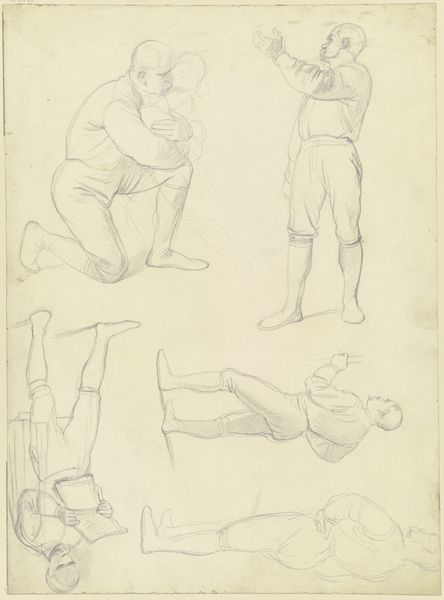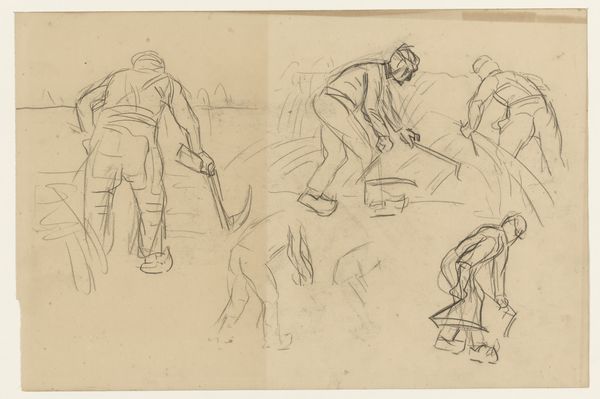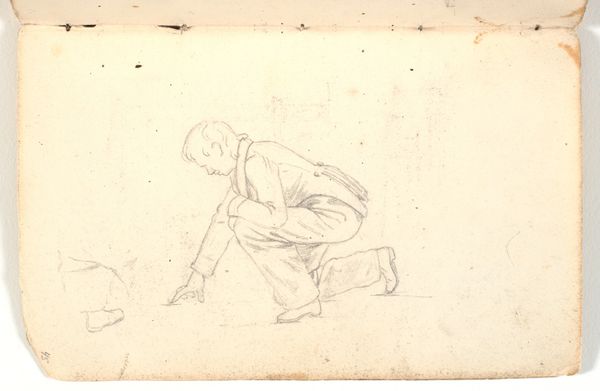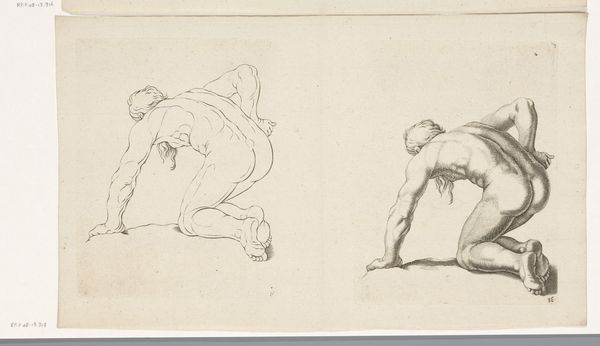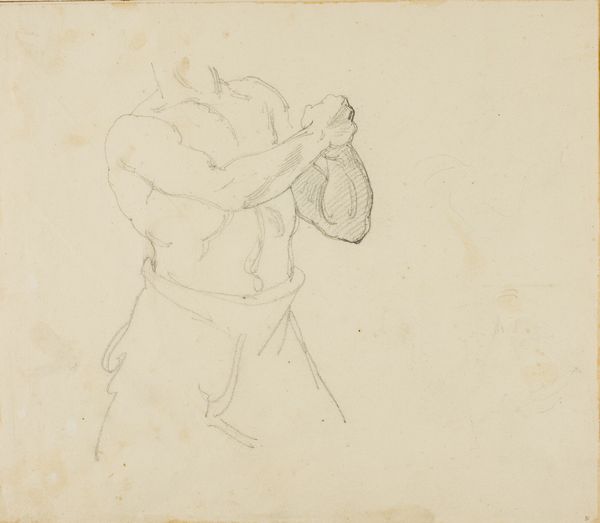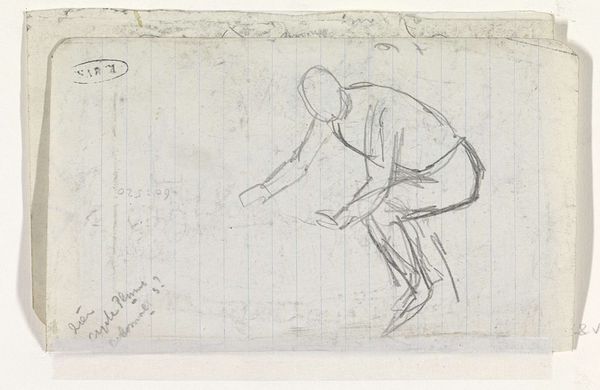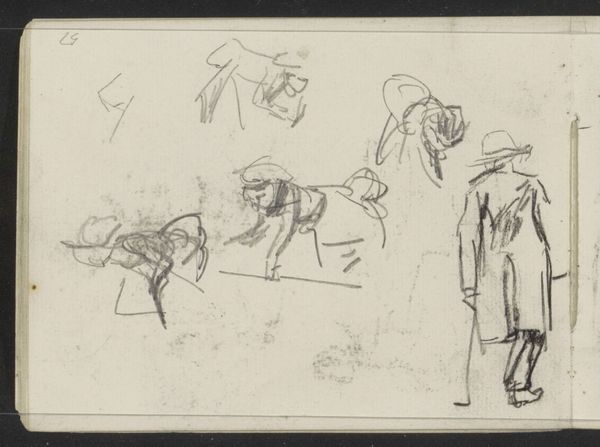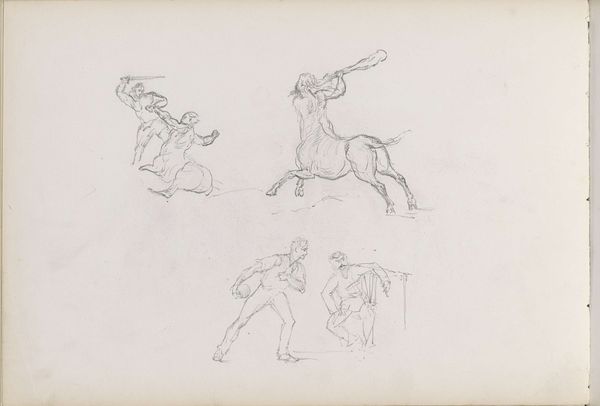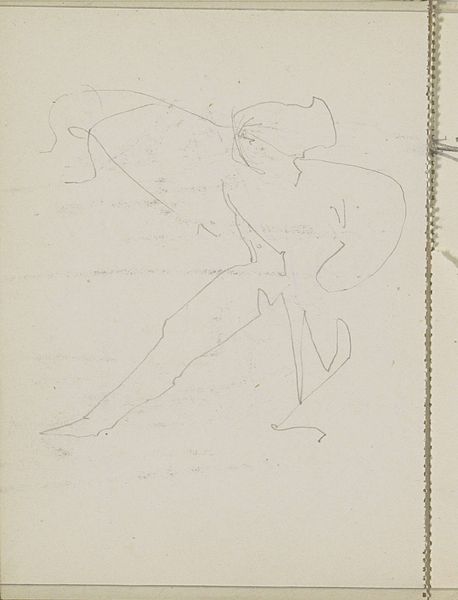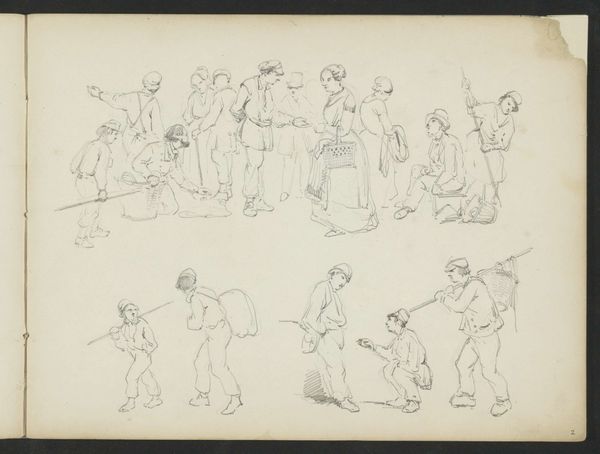
drawing, paper, pencil
#
portrait
#
drawing
#
imaginative character sketch
#
light pencil work
#
quirky sketch
#
figuration
#
paper
#
personal sketchbook
#
idea generation sketch
#
character sketch
#
ink drawing experimentation
#
pencil
#
sketchbook drawing
#
storyboard and sketchbook work
#
academic-art
#
realism
#
initial sketch
Dimensions: height 235 mm, width 406 mm
Copyright: Rijks Museum: Open Domain
Editor: Here we have Johan Koelman's "Studies van een bukkende man," from sometime between 1841 and 1857. It’s a pencil drawing on paper, housed here at the Rijksmuseum. I find it intriguing—almost like a quick peek into the artist's mind. It’s sketchy and raw. What stands out to you? Curator: For me, it whispers of the quiet intensity of observation. Koelman’s pencil seems to dance across the paper, capturing not just the form, but the very act of bending, straining, perhaps even the character of the individual. Do you feel the fleeting nature of these studies? They weren't meant for an audience, were they? They're a thought jotted down, a physical echo of an idea. Editor: Absolutely! It feels like we're intruding on a private moment of artistic exploration. It also makes me think about class and labor, if I’m being honest. Is Koelman trying to capture something about the dignity of labor? Curator: A wonderful thought! Consider that academic art in this period often sought to ennoble everyday life. Perhaps Koelman is engaging with this, seeking the inherent beauty, even heroism, in simple acts. It reminds me of Millet, doesn’t it? But in such a subtle, almost subconscious way. Are you reminded of the Dutch Golden age by this somehow, also? Editor: In a way, yes. Although the lightness of touch is definitely different. I appreciate how this seemingly simple sketch opens up these layers of interpretation. It felt minor at first, but there's real depth here! Curator: Isn’t it lovely how something so seemingly ephemeral can hold such weight? Like a perfectly caught breath, it shows the power and potential of even the simplest medium in reflecting both outward appearance and inward spirit. I know this drawing will stick with me for days!
Comments
No comments
Be the first to comment and join the conversation on the ultimate creative platform.
